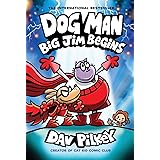Australia’s cattle industry could unlock a lot more value if it developed flavour profiles, similar to those used in the wine industry.
Key points:
- Flavour chemist and sensory scientist Heather Smyth helped develop the world’s first flavour wheel for wagyu beef
- Dr Smyth says there needs to be more to describe beef than “juicy” and “tender”
- She says current terminology falls well short of the sophisticated language used by other industries
That’s the view of Associate Professor Heather Smyth, who is a flavour chemist and sensory scientist at the University of Queensland.
Dr Smyth said the current terminology of describing premium beef as “juicy” and “tender” fell well short of the sophisticated language used by other industries.
“Beef is equally as complex as wine or coffee,” she said.
“But for many decades, the beef industry has believed that tenderness is what makes consumers like a product and, yes, it has done wonders at removing a lot of tough meat from the bottom end [of the market].
“But what it hasn’t focused on is that top end, and lifting the lid on beef flavour quality that can be equally as diverse as wine.”
A whole wheel of flavours
Dr Smyth helped create a world-first Wagyu beef flavour wheel in 2020 and has recently led research into whether feeding cattle seaweed affected flavour.
But she said the industry was still well behind other food and beverage sectors and it was time for a rethink.
“I’m not saying there’s anything wrong with the industry’s MSA (Meat Standards Australia), but it does need a workover,” she said.
“I think the industry needs to think of a more objective tool that relies on trained palates to give ratings and scores on diverse sensory properties and develop that sensory language around beef and differentiate brands.”
Dr Smyth said chefs were showing a lot of interest in her research as they were looking for language around beef to help match the product with wines and sauces.
“We need to be able to describe that flavour difference and communicate that to our customers around the world,” she said.
“From a flavour chemist perspective, what are the components in the beef that are creating those delicious aromas, the roasted notes, the caramelised flavours, the gaminess?
“If we can make those connections, we could deliver a consistent sensory quality”.
Dr Smyth said this was a challenge facing the global beef industry and hoped Australia could lead the way in creating elite beef brands based on flavour.
Posted
Note: This article have been indexed to our site. We do not claim legitimacy, ownership or copyright of any of the content above. To see the article at original source Click Here










:quality(70)/cloudfront-us-east-1.images.arcpublishing.com/mco/J3MDBV23EVEXNI42RMJLWYCN6Y.jpg)


